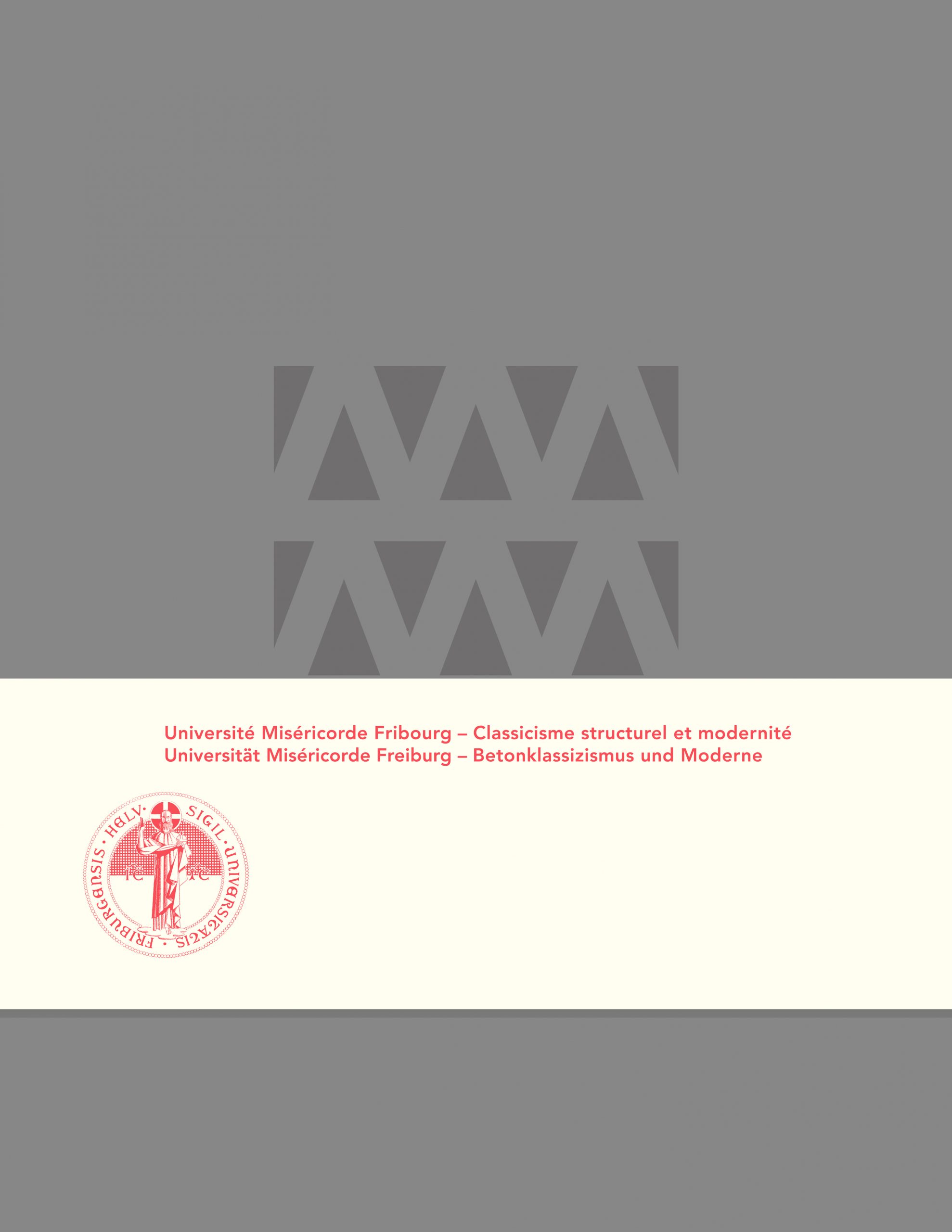
78,00 €
Availability: 88 in stock
–
recommend it
–
Forum d’architecture Fribourg – Freiburger Architekturforum, Cyrill Haymoz (eds.)
–
Universität Miséricorde Freiburg
Betonklassizismus und Moderne [Université Miséricorde Fribourg Classicisme structurel et modernité]
L’université Miséricorde (construction 1937–1941) est un édifice singulier dont l’architecture, entre tradition et modernité, fascine et déconcerte. Le jeune architecte Denis Honegger (1907–1981), auteur du projet et qui s’occupa avec passion du moindre détail de sa réalisation, était pleinement conscient de cette ambivalence. S’inspirant des principes achitecturaux de ses maîtres, le classiciste Auguste Perret et l’avant-gardiste Le Corbusier, il réussit l’exploit de marier deux concepts décidemment contraires en une synthèse originale. La nouvelle édition bilingue de la publication épuisée de 1941 est enrichie de textes sur l’architecture et l’ingénierie et d’un supplément photo. De nombreux plans et images documentent l’architecture de Denis Honegger et de Fernand Dumas, les travaux des ingénieurs Alexandre Sarrasin, Henri Gicot, Beda Hefti et Jean Barras, audacieux pour l’époque, ainsi que les innovations en matière d’acoustique, d’éclairage, de technique constructive, d’art architectural, etc. Contributions de Christoph Allenspach, Eugen Brühwiler, Claude Castella, Sébastian Radouan et Verena Huber Nievergelt.
The University of Miséricorde (built between 1937–1941) is an altogether wayward building project, which fascinates and irritates equally with its ambivalent appearance poised between the traditional and the modern. The architecture seeks to achieve a balance between a classicist tectonic approach and modern volumetric principles. This ambivalence is not only apparent in the appearance of the facility in its entirety, but also in each of the separate building sections, the rooms and the forms chosen for use and even in the technical implementation and in the choice of fittings. The young architect Denis Honegger (1907–1981), who produced the design and who was involved in the implementation with passionate intensity down to the smallest details, was well aware of this ambivalence. He allowed the architectural principles of both his great teachers, the modern classicist Auguste Perret and the modern avant-garde master Le Corbusier, flow into his work in a daring and altogether difficult balancing act. His outstanding achievement is the recasting of two contradictory concepts in an original synthesis.
This new edition of the building publication which appeared in 1941 includes new texts on the architecture and the engineering work, and one third of this dual language publication is dedicated to new photographic material. This commemorative volume includes extensive plans and illustrations together with explanatory essays on the architecture of Denis Honegger and Fernand Dumas, the structural physics work of Alexandre Sarrasin, Henri Gicot, Beda Hefti and Jean Barras and on the innovative contributions to acoustics, lighting, building technology and the integration of art in the building.
